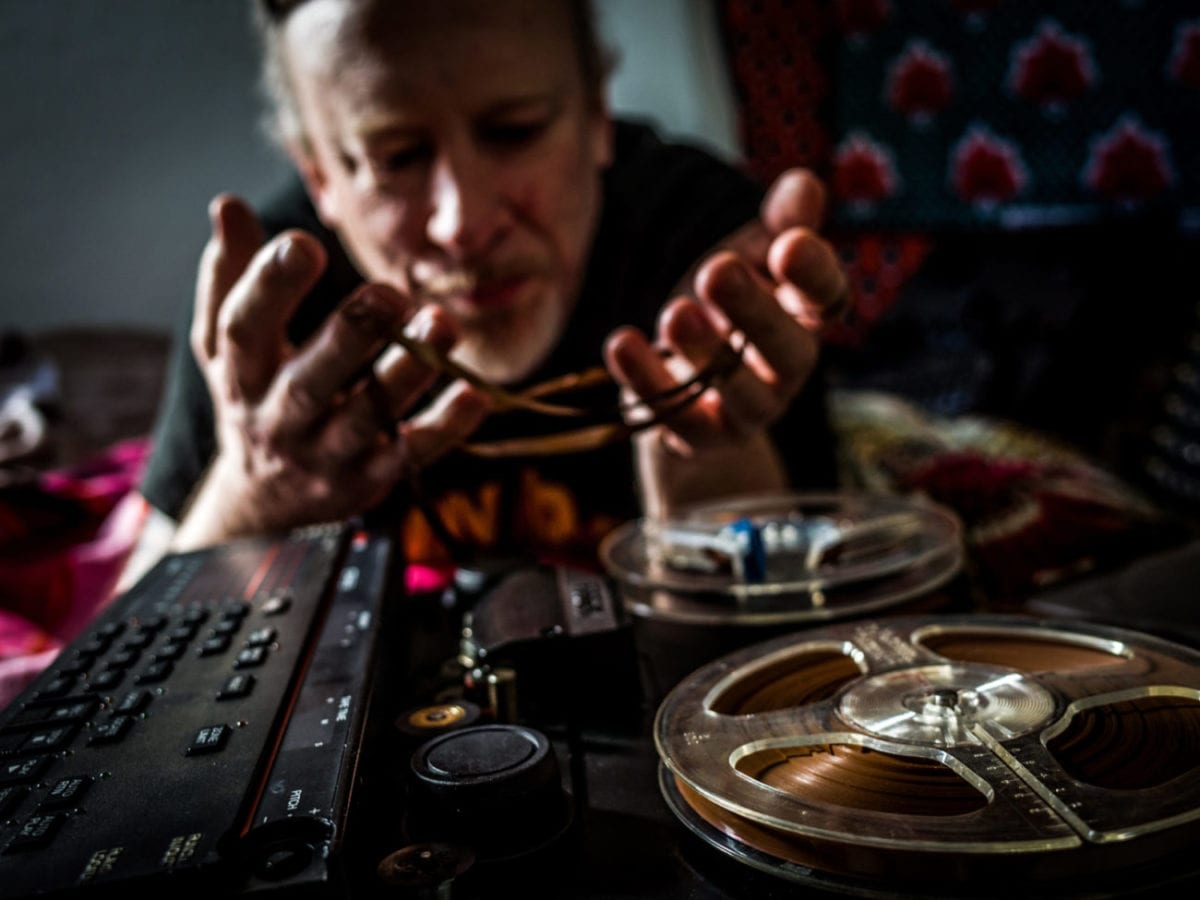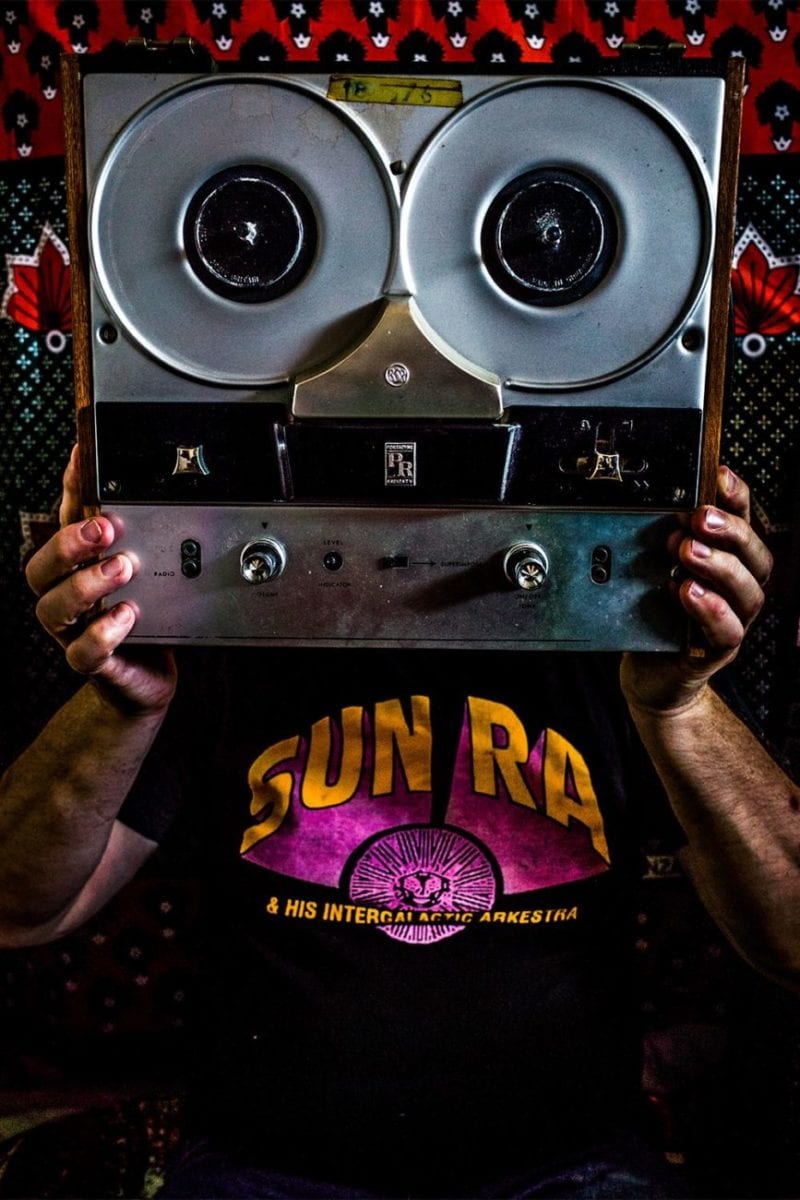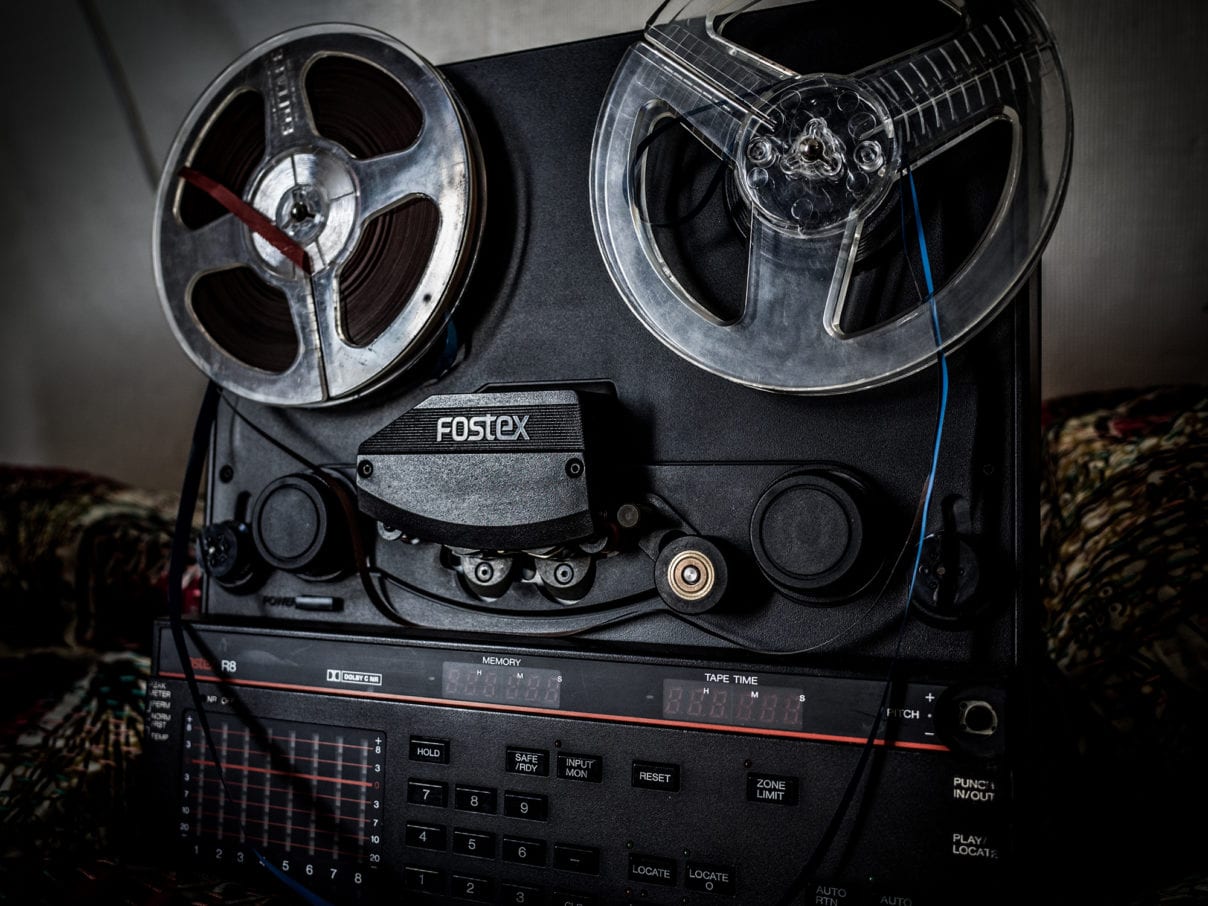
Walking into Paul Chivers North London studio space, a photograph of the Sun Ra Arkestra’s Marshal Allen stands out among the recording equipment and computers. It captures two strands present throughout Chivers’ music. An attempt to embody the thrilling unpredictability of live performance while pushing the limitations presented by technology.
This relationship is crystal clear in Ramjac Corporation’s most well-known work. Initially released on Irdial Discs in 1990 and soon to be reissued on Emotional Rescue, Cameroon Massif is the sound of UK dance music exploding into myriad new trajectories. Synthetic textures and acid squelch tie the track to the strobe light optimism of a rave. Yet the intricately programmed beats and wandering structure leave you feeling it is channelling something far more free-form.
Coming from a background as a percussionist, Chivers found himself pulled towards the rave scene in the late 80s. Working with an Emulator Emax sampler and an Atari computer, he began creating his own tracks. As he tells Inverted Audio, even at that time his equipment was rudimentary compared to his contemporaries. The key was a strive to get the most from what was available.

“I didn’t have a studio, the sampler was a studio. I had no budget because I spent all my time programming music and not working. I found learning how to use the Atari and work a sampler a bit like a computer game. There are different levels. You struggle for ages to get to the next level, and then there’s an amazing moment of revelation: ‘Now that whole level has opened up to me. Now I can control analogue filters with velocity sensitivity…’”
“The music opened up and grew in those ways. I didn’t need another sampler for years. People moved along a lot faster than me, into studios with high end production. I didn’t [have that] but what I did have was a lot of live gigs. The scene was so vibrant. People would phone up and invite me to play, and it grew very quickly.”
“All the way through that period I took the drum machine, a sampler and the Atari into the school [where Chivers worked as a music technology teacher]. And then on Friday night I’d have a gig in a riding stable in front of 3,000 people. Eventually the kids rumbled me…”
This live element was and still is crucial to Chivers’ music as Ramjac Corporation. He speaks warmly of soul singers such as Angie Stone, and Fela Kuti, artists who in a live setting use their songs as a vehicle for improvisation.
“I’ve checked the floppy disks [from the Atari Chivers used for recording] and there never was an arrangement for Cameroon Massif…
“I’d much rather take a track and stretch it out live, and in the days when you had to load a floppy disk in 30 seconds of silence, it was much easier to go on and to see what you could get out of the tune. Drop a break beat in, bring it out again. Lowering the tempo, speeding it up again.”

“If you listen to the Live at the Brain version [of Cameroon Massif] recorded in 1990, there’s a few bars where a DJ might expect the beat to come in, and it doesn’t. That’s because live I tried to click the fader and I missed, and I had to wait until next time round. Then it finally comes in.”
“It’s live, anything can happen, someone could come and talk to you while you’re playing or it could just be incompetence. [But] the live thing was always a very big part of it. I’d grown up going to gigs, and I’d done my first gig and recording session when I was 17. I was gone 26 by the time I did Cameroon Massif.”
Speaking to Chivers now, these unexpected ‘events’ both internal and external to a live performance have had a lasting effect on his attitudes to music. He describes a night in North London with Irresistible Force in the 90s, when technical woes meant the only functioning part of his setup was a drum machine. Rather than being a catastrophe, it opened a stream of new possibilities.
“I hit play on the drum machine at 3 or 4 in the morning. People had been dancing hard since 11. People were rocking away on the beat. I thought, what if I go to pattern number two. We had 10 mins of stripped down drum machine, going through the patterns. Everyone was on the dance floor, going for it.
“The scene was so unpretentious then that nobody stopped dancing. Then it lifted off [and the equipment started to work]. I started playing my tunes. Some guy came over and asked for a mic. We didn’t have a mic, we had a headphone [which he used as a mic]. It was a good vibe. Then this tall guy asked for the mic, and started MCing, and it was amazing. I asked him to work with me again, but I never heard from him. But, that experience has really stuck with me.”
Now, Chivers is preparing himself for a run of new live shows as Ramjac Corporation, including his performance at our Campfire Headphase stage at Farr Festival 2018. He has ditched the Atari and the sampler, and will instead use reel-to-reel tape players to perform live dubs of Ramjac Corporation material. For these shows, he’ll be accompanied by MC Milo Lapis of the 50-50 Sound System (ResonanceFM).
“I’m still in love with the music I wrote in those days, and now [with the reissue], I have a reason to perform it again.”
Cameroon Massif! is due for release sometime in July, order a copy from Juno.
Ramjac Corporation plays live for Inverted Audio at Farr Festival 2018 on Saturday 7th July alongside Claro Intelecto (live), DJ Richard, HOLOVR (live), Galcher Lustwerk, Vester Koza, Martin Josef and Chuggy. Tickets are on sale now.
Photography by Aniruddha Das
TRACKLIST
A1. Cameroon Massif! (Massive mix)
A2. Cameroon Massif! (Massive mix)
B. Cameroon Massif! (live At The Brain 09 mix)
Discover more about Ramjac Corporation and Emotional Rescue on Inverted Audio.
Ramjac CorporationEmotional RescueJune 2018Acid HouseFarr Festival